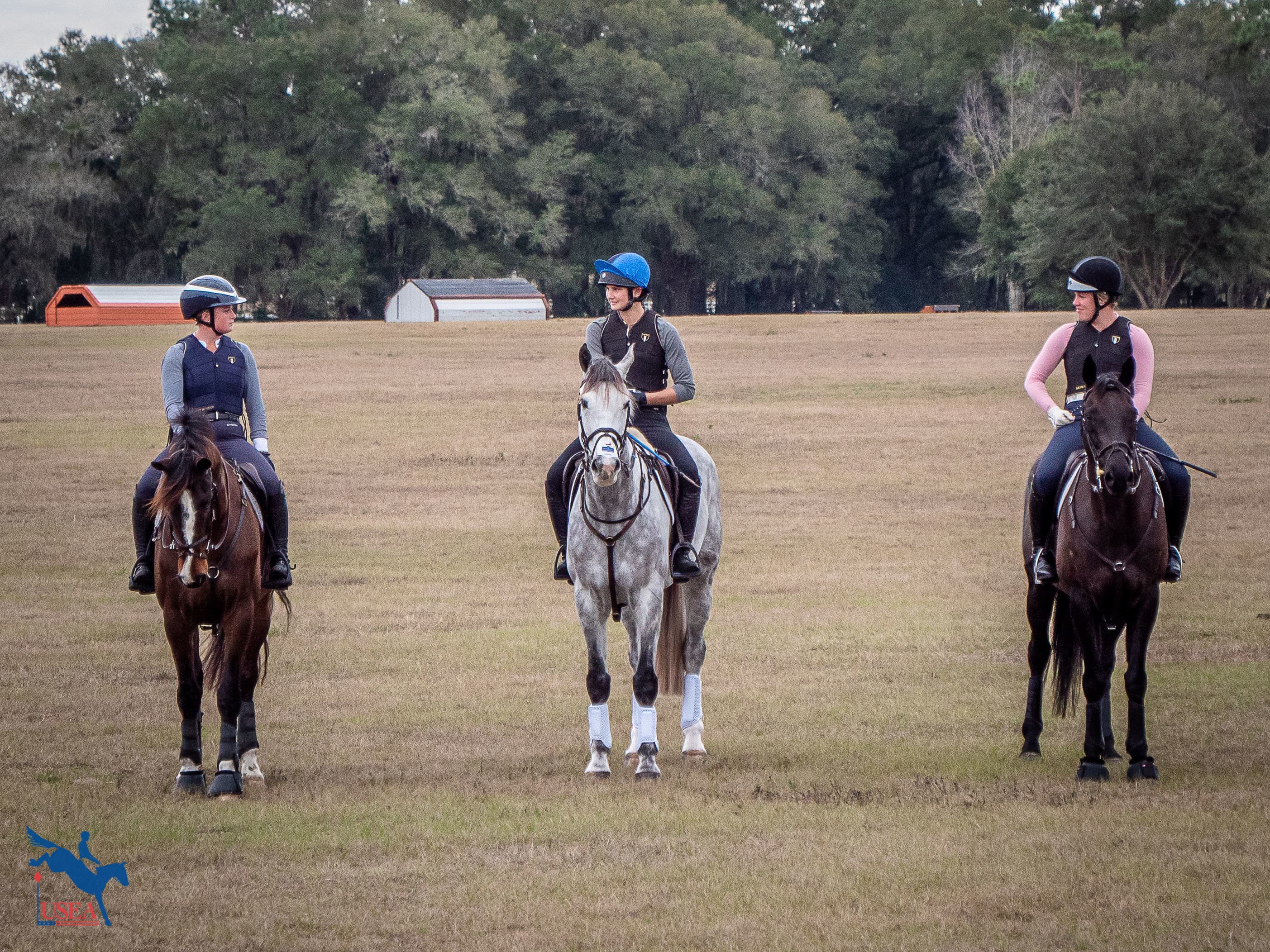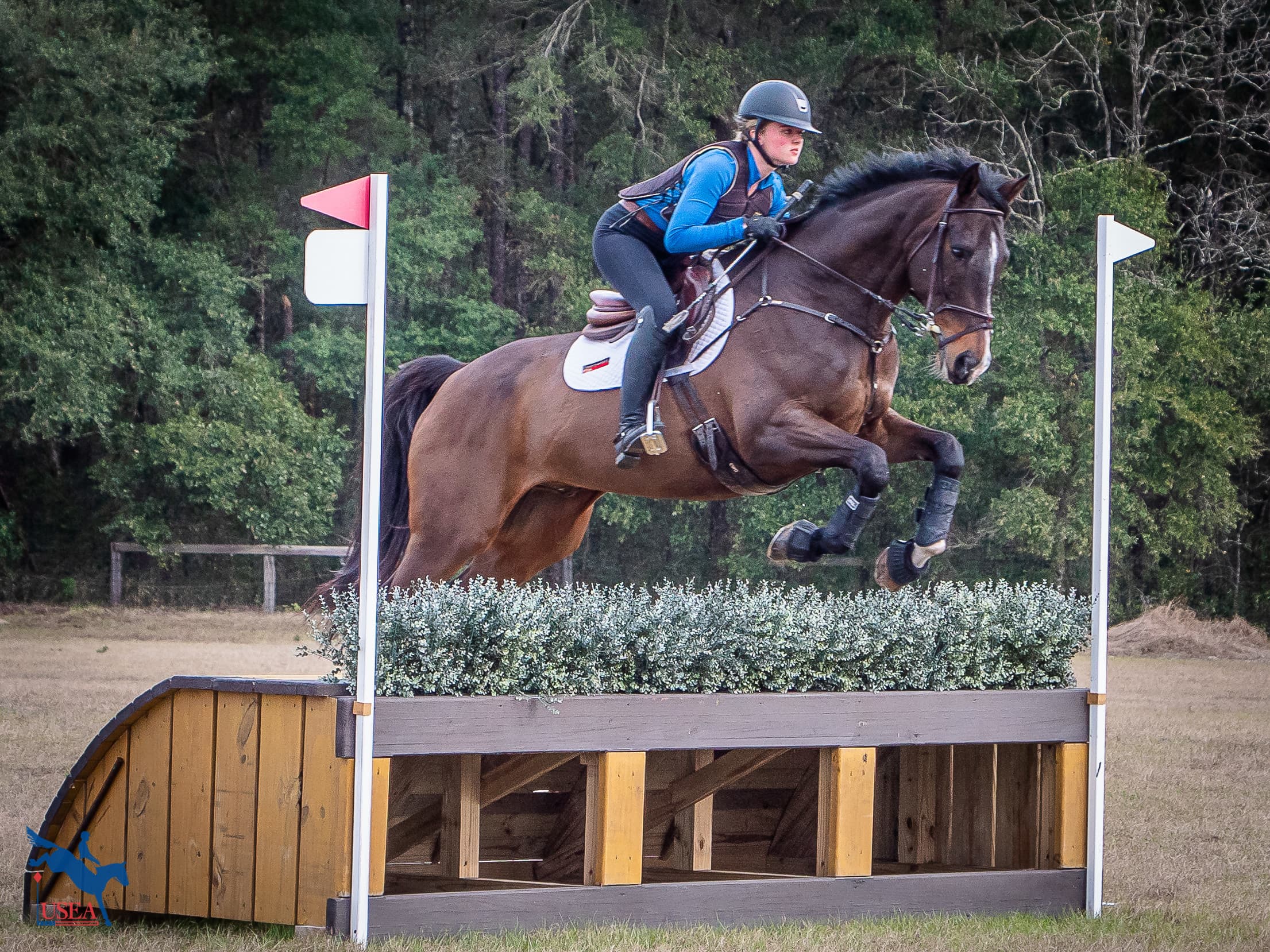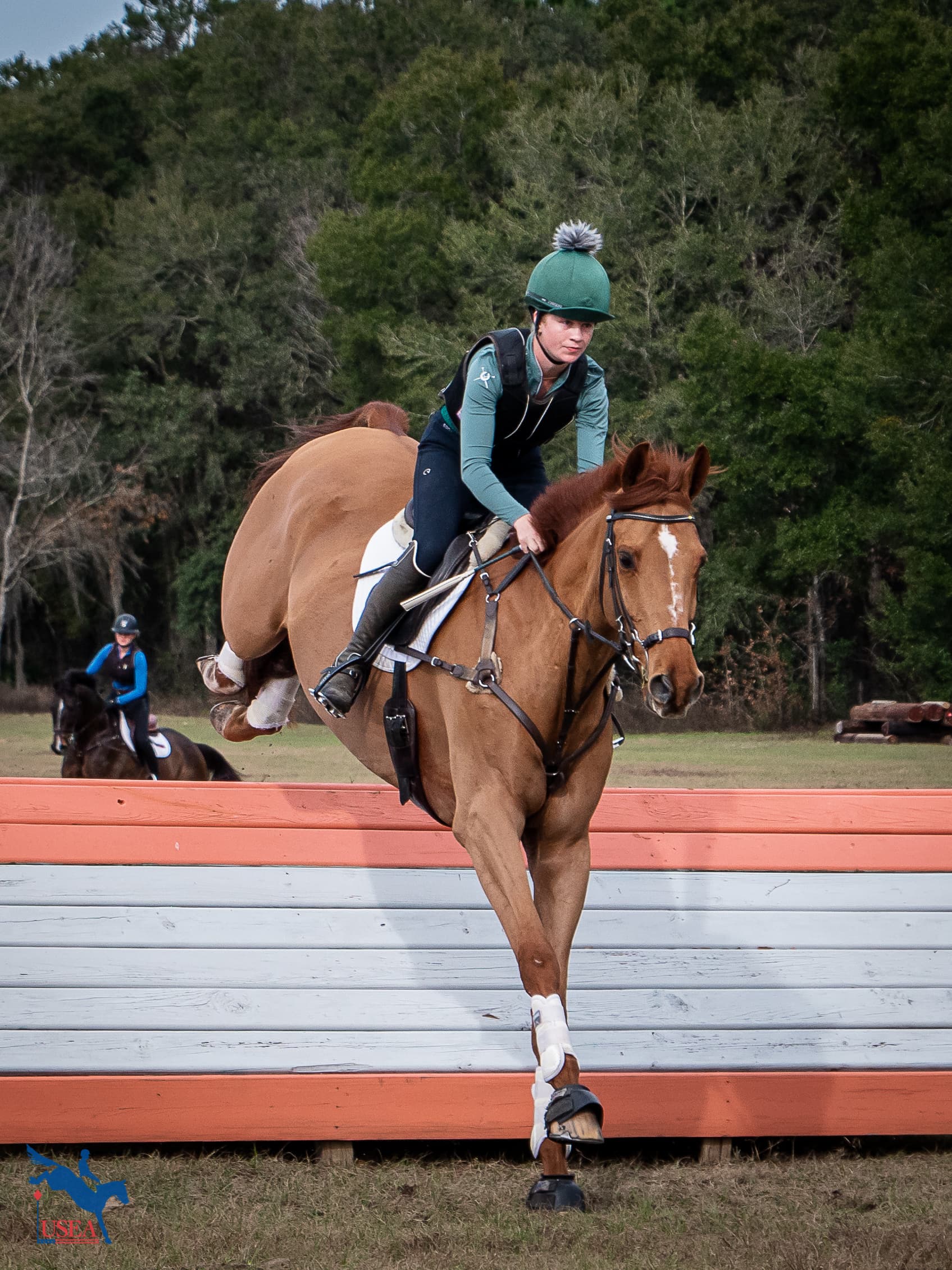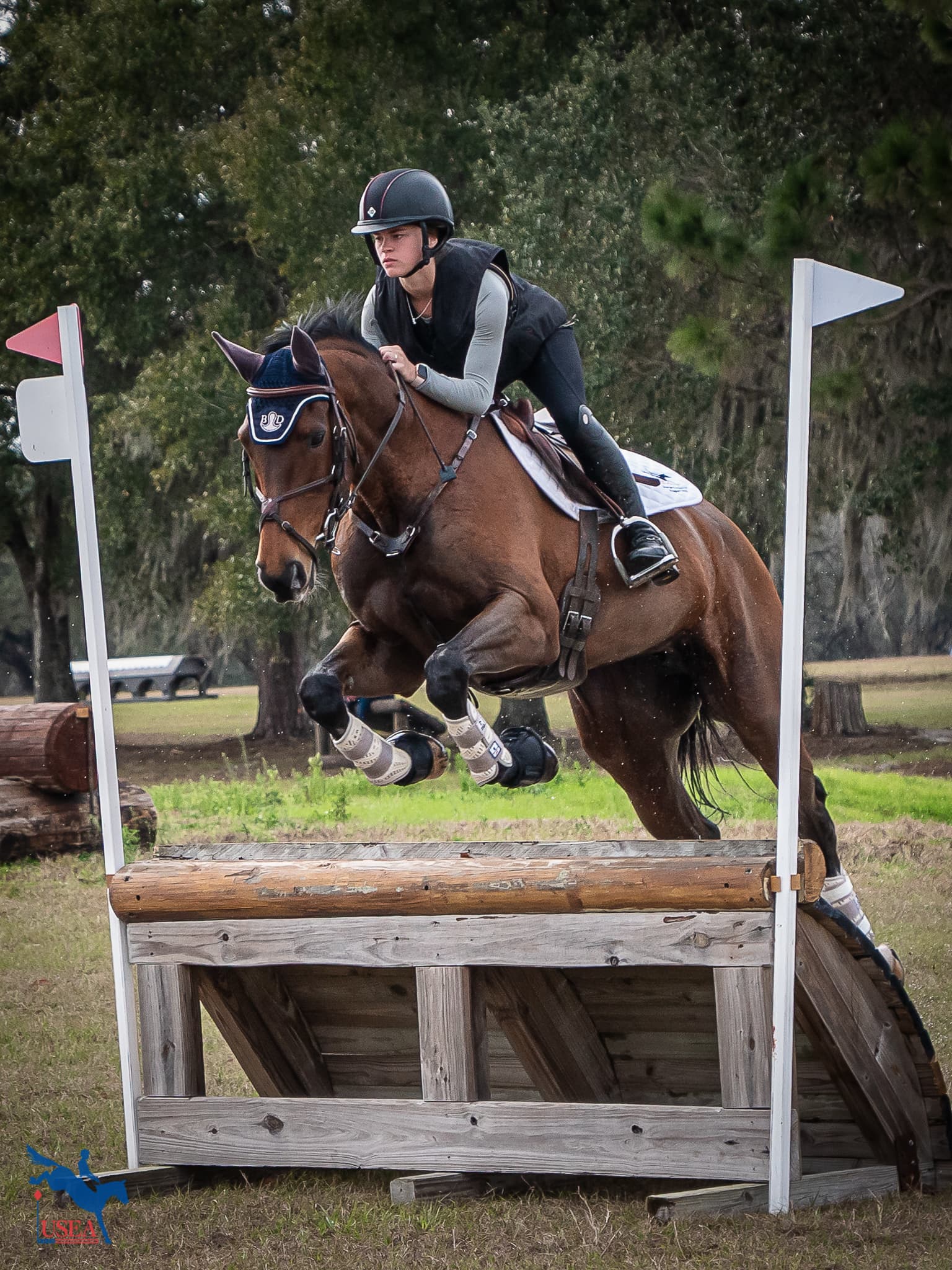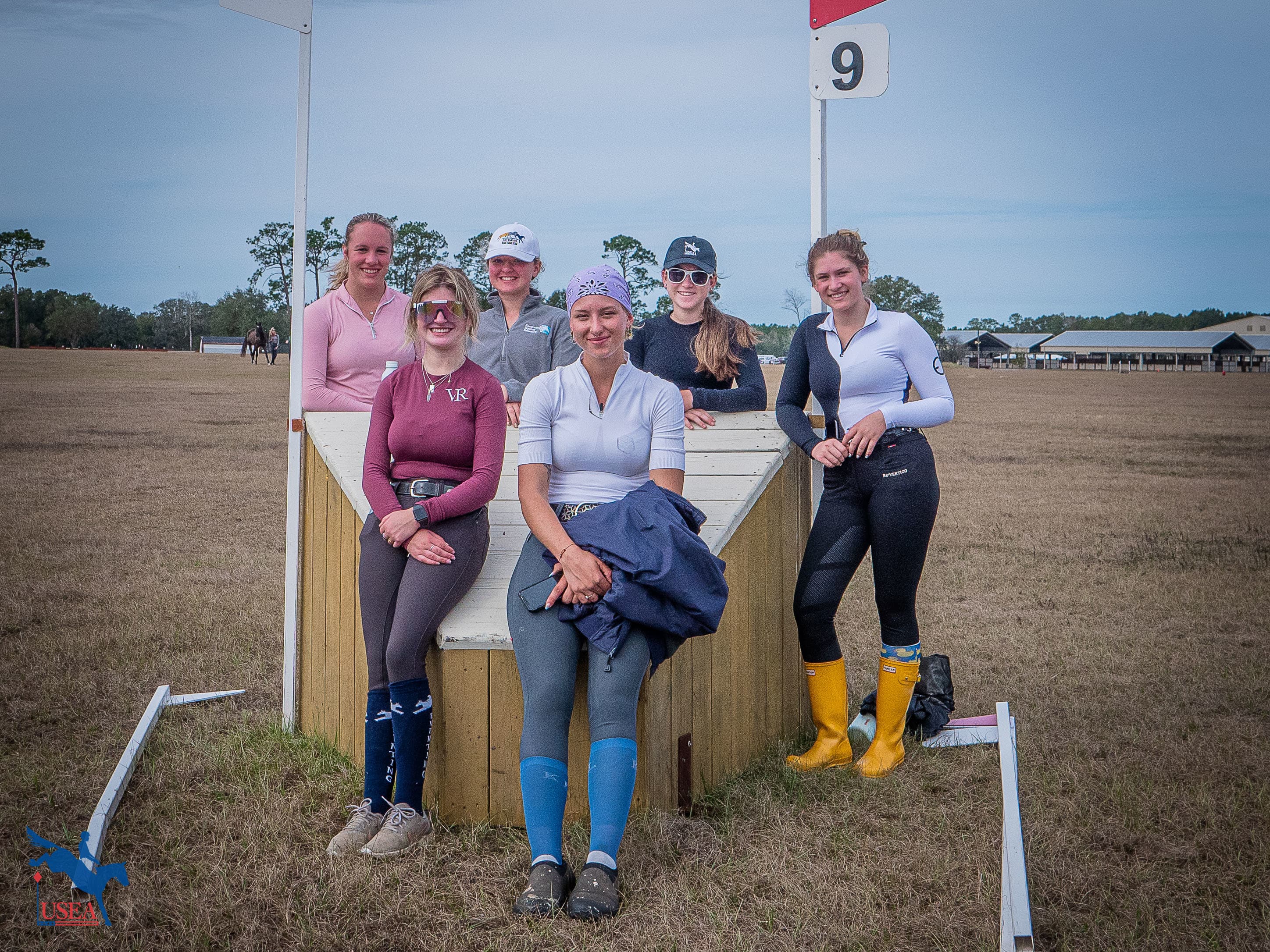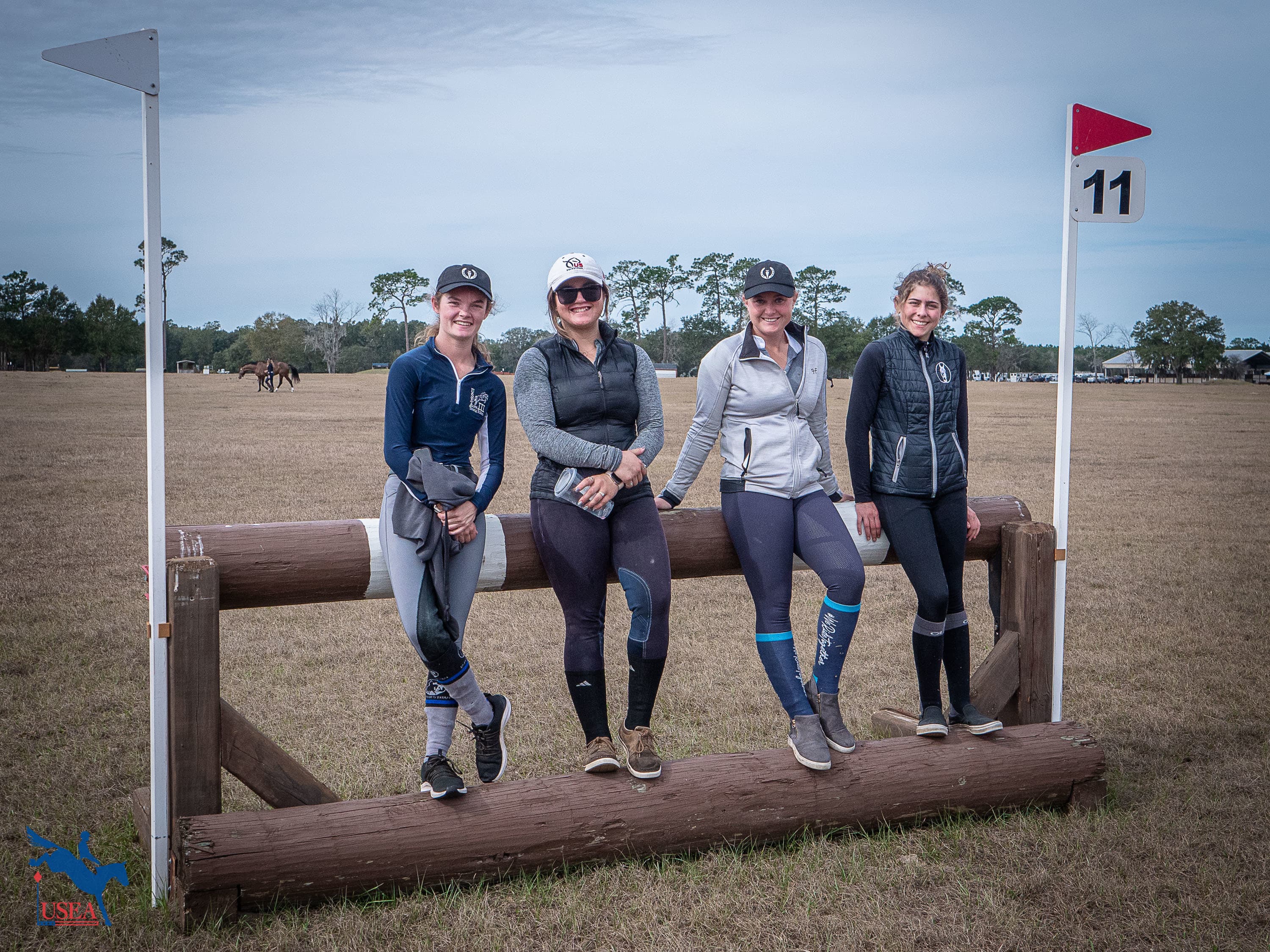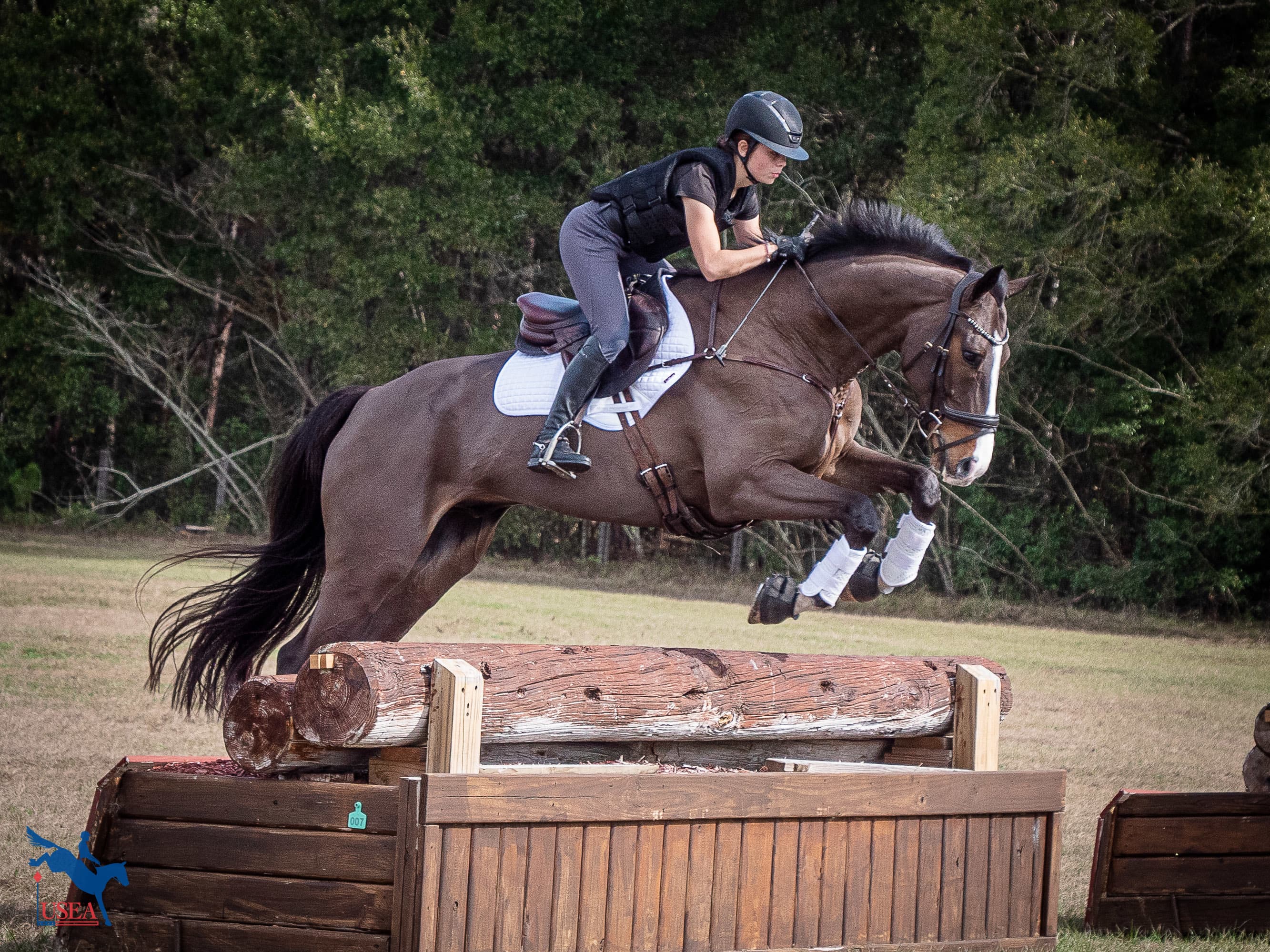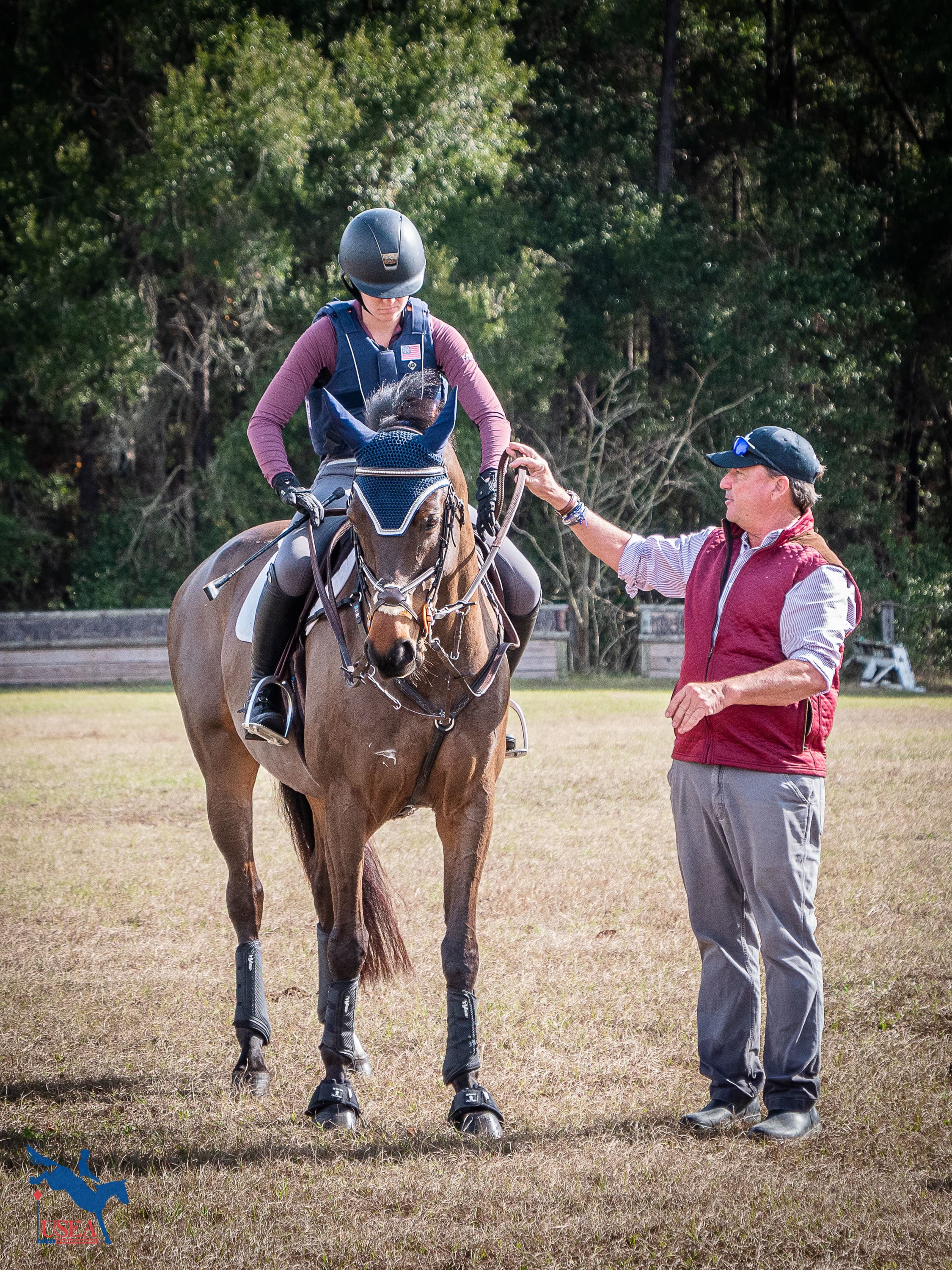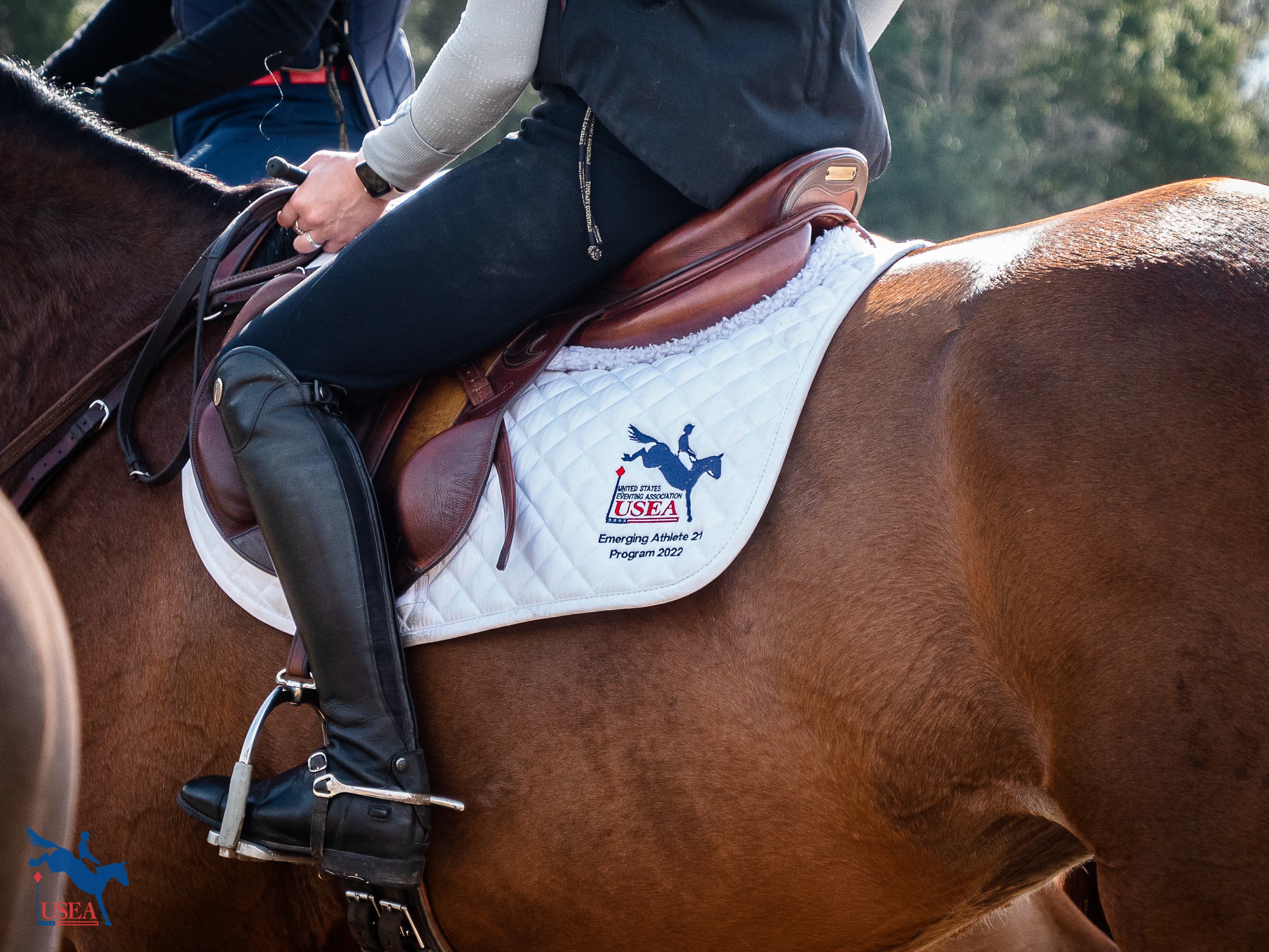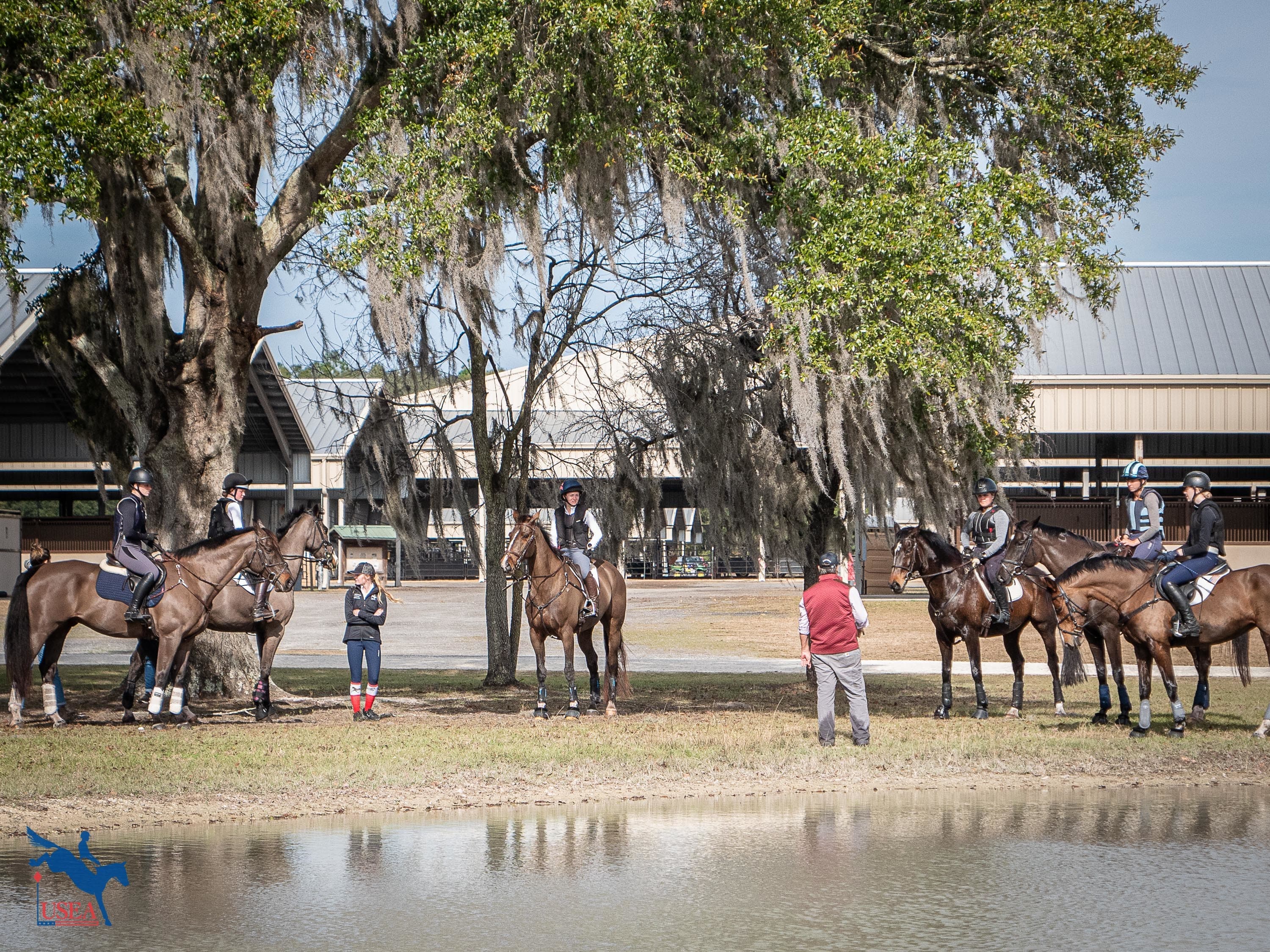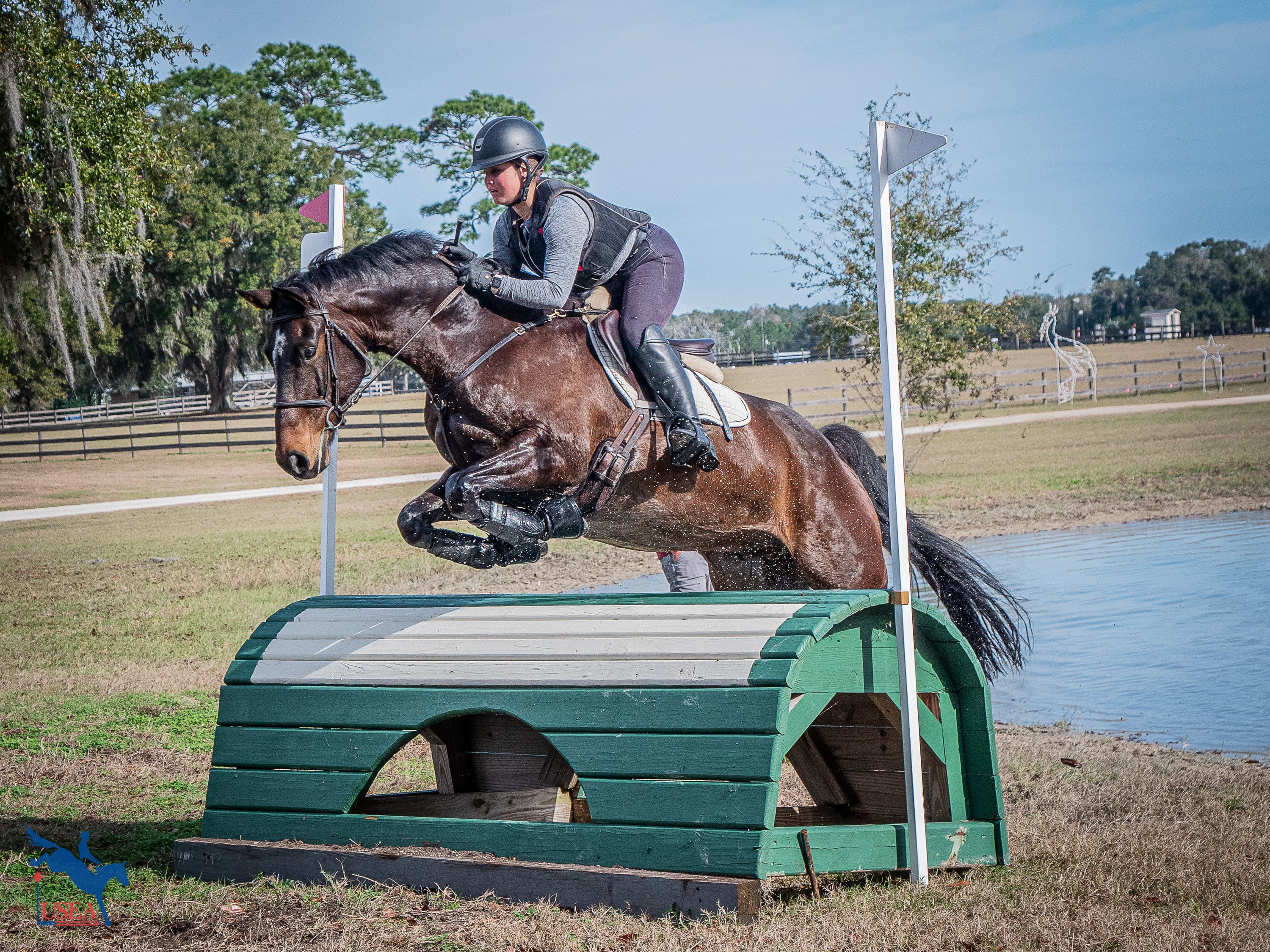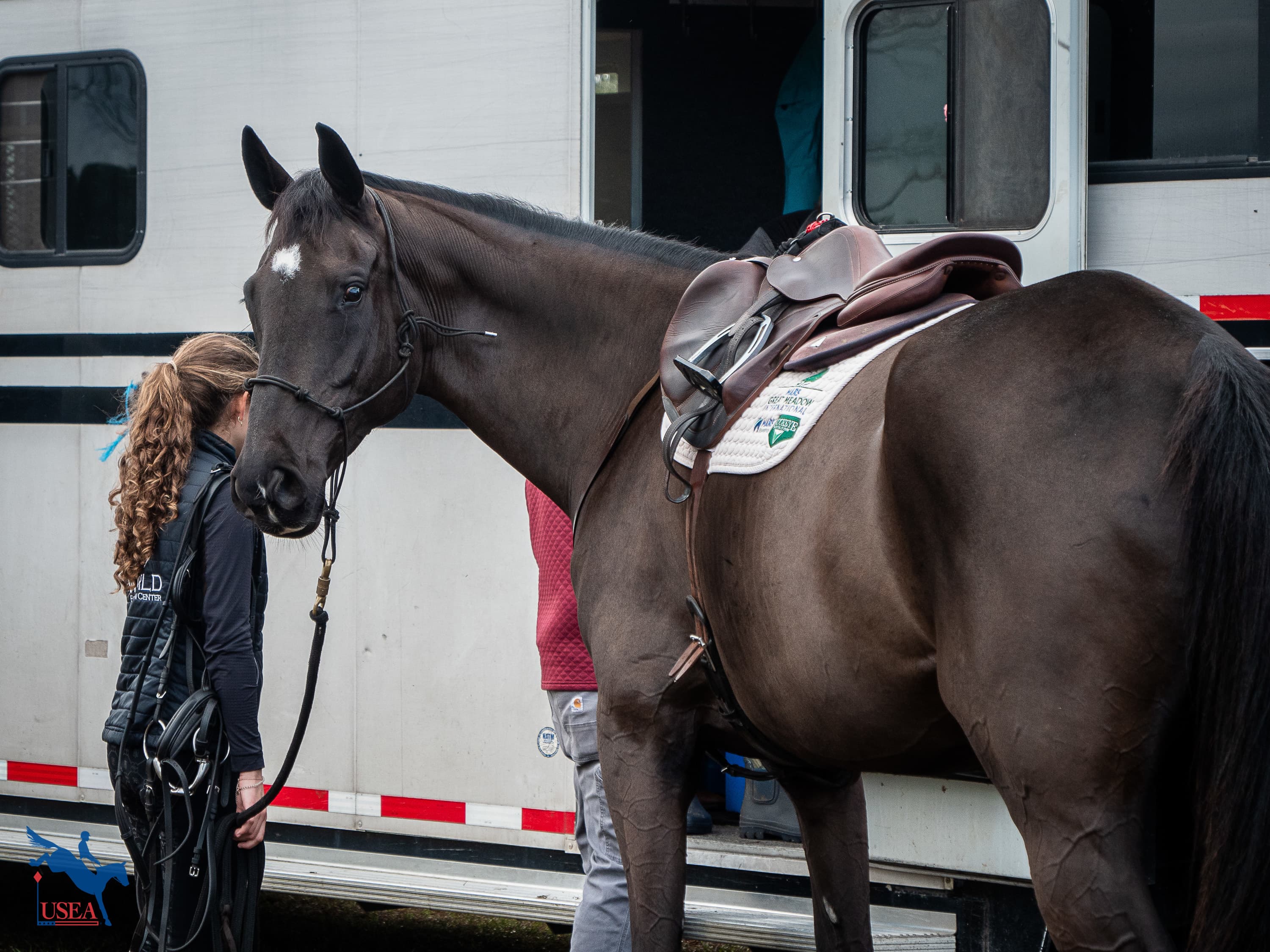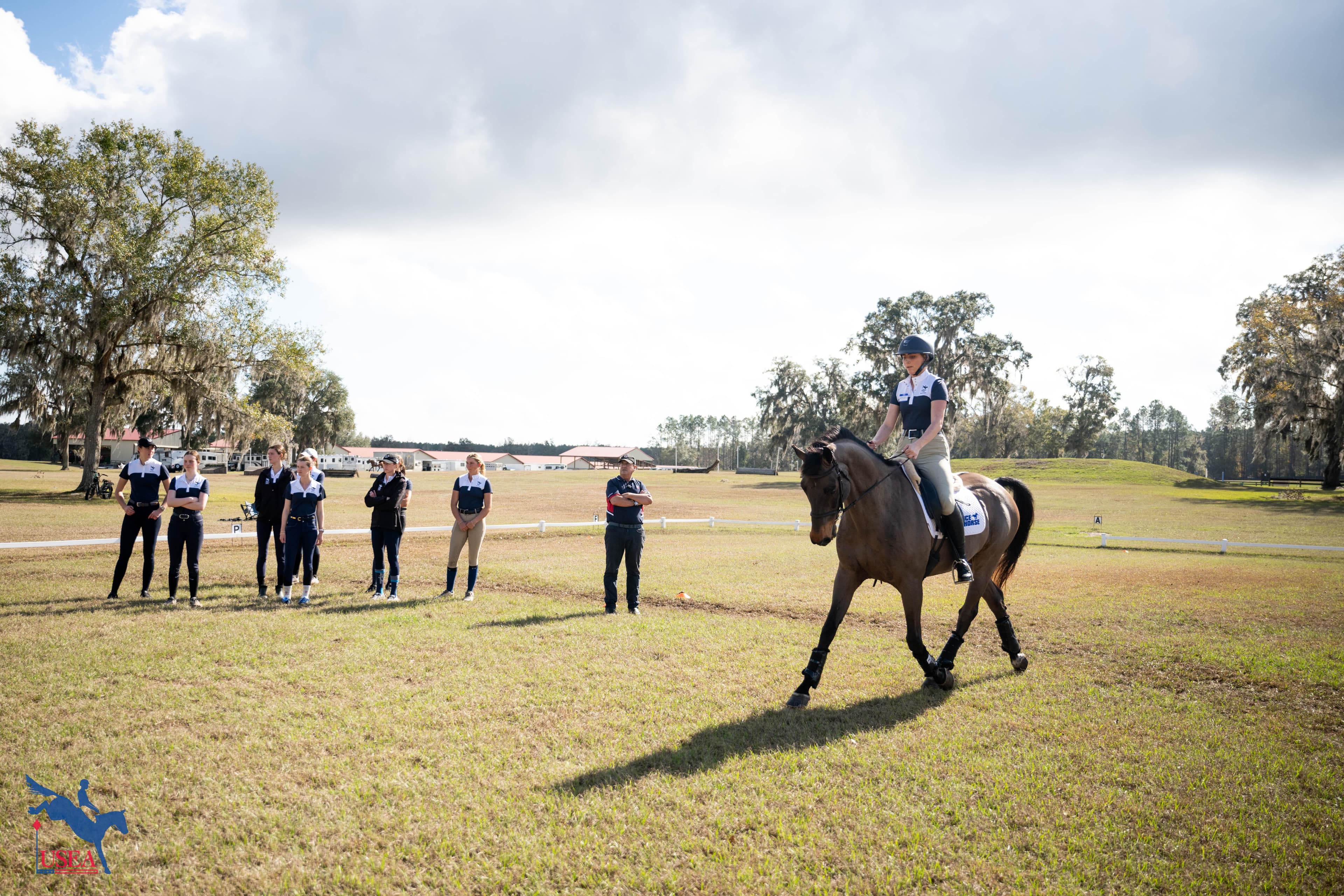The Four Positions for Cross-Country Success: Day Four of the EA21 National Camp
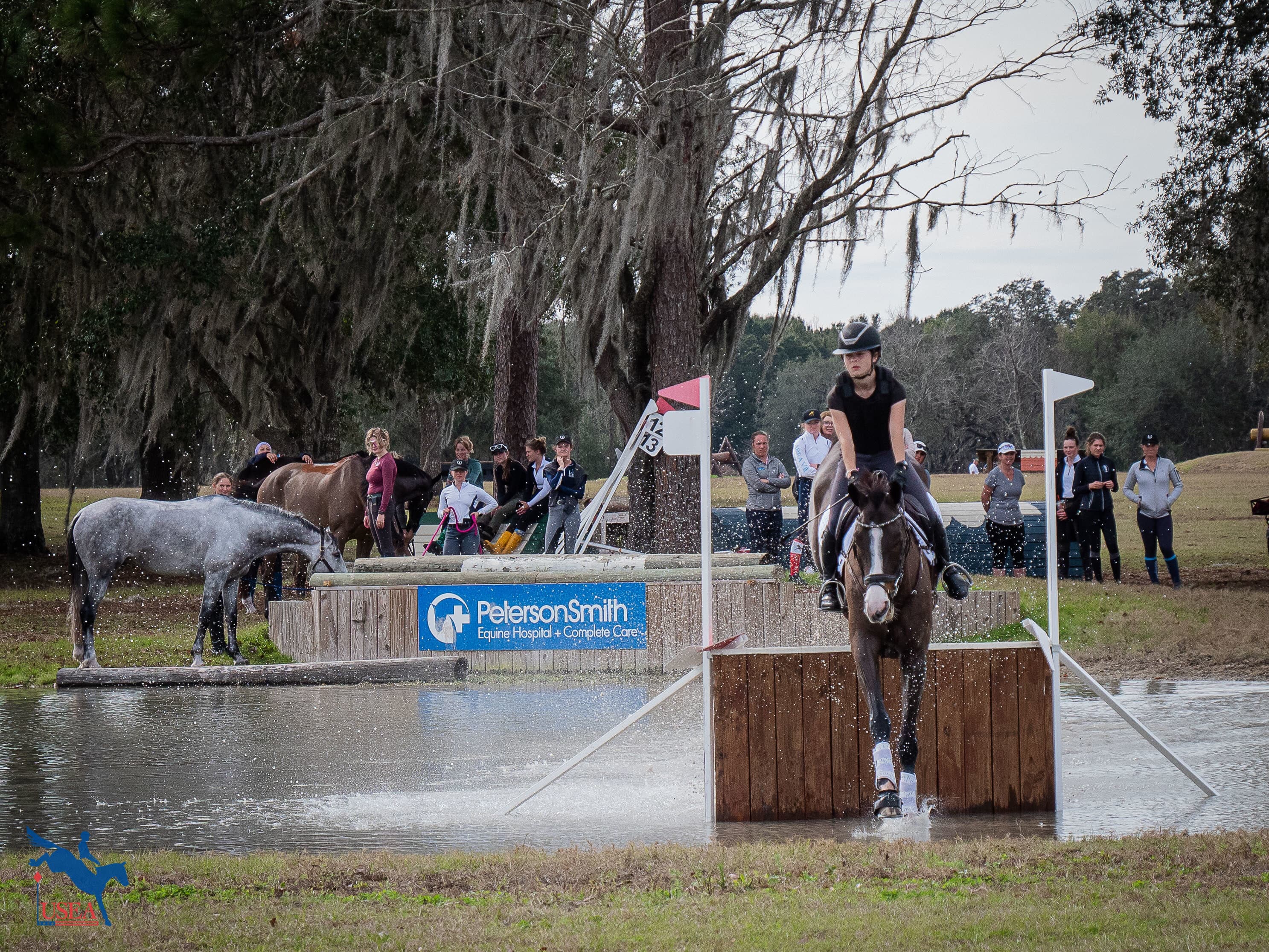
The fourth day of the EA21 National Camp was all about everyone’s favorite phase: cross-country. The continuing themes of preparation and following the basic rules of riding as discussed throughout the week so far were applied as the riders traveled to the Florida Horse Park for a day of cross-country schooling following the morning lecture.
During the classroom portion of day four’s schedule, EA21 Director of Coaching David O’Connor highlighted that good eventers don’t just sit there in the saddle, they are always adjusting as they ride. O’Connor outlined four specific riding positions that riders can utilize during a cross-country round: the galloping position, preparation position, jumping position, and drop position. The galloping position is the most economic place for the rider to be as the horse gets from point A to point B on course. It is up and out of the saddle with the rider’s legs and body bent over the horse. The purpose of this position is that it uses less energy to get through the whole course. O’Connor emphasized that riders should never jump in the galloping position. “The big rule is to not ever jump a fence out of your galloping position,” he stated as he introduced the next position for review - the preparation position.
The exact way a rider moves into the preparation position slightly varies based on height, shared O’Connor, but the key is to move the rider’s seat to the back of the saddle. The rider should be in this position and ready to adjust and react to the horse by the time it is five to six strides away from the jump, which is when the horse starts to see the jump. O’Connor emphasized the importance of allowing the horse the time necessary to look at the jump and for the rider to react and execute their responsibilities to successfully tackle the obstacle. He shared that it is better to start prepping too soon and sacrifice time than to prepare too late and sacrifice safety and success over the fence. The preparation position is then followed by the jumping position as the horse goes over the fence. O’Connor discussed how different types of jumps should be approached differently. Elements such as verticalness, terrain, narrowness, and what follows the jump can all result in the need to take the jump slower. If the elevation of the terrain changes, then the final position, the drop position, is necessary.
The drop position is specific for the jumps and portions of the course that have a change in elevation. The rider should move their hip, not their shoulder, to adjust for how the horse moves during this kind of maneuver. This prevents the rider from falling off as the horse lands and allows the rider to be ready for whatever is coming next. All of these positions are necessary to succeed in a cross-country course.
EA21 participant Sarah Ertl of Santa Cruz, California reflected, “Last year I went back to California for a summer, and I had a clinic with [O’Connor] at the end of the summer. [Today’s educational session] reminded me about the positions we discussed and the kind of riding that just makes cross-country so simple. And I think if I had gone out [to school] today without having that conversation, it would have gone totally differently. I really applied the positions today. It just makes riding cross-country so much easier, and so much more enjoyable, and I think it’s a lot more enjoyable for my horse, Thomas.”
O’Connor’s lecture then moved to various tips on schooling horses and approaching combinations. He stated that the horse should be taught to hunt the jump. As the horse is introduced to combinations, the last jump in the combination should be taught first. This teaches the horse to look for that jump as the other elements are added. O’Connor also touched on building trust for water and ditches. Trotting the water first and going over jumps coming out of the water should be practiced before jumping into the water. For ditches, O’Connor noted that lack of confidence could end a horse’s career. He shared that a brave horse is able to walk up to a ditch, look at it, and then step over. It is important in all areas of schooling cross-country to be specific and careful. The goal is to have a horse approach any jump whether it is a crossrail or a ditch and wall with the same attitude; it’s just a jump. The rider should mimic the same mentality as well.
Intentionality and preparation have been discussed throughout the week, and this applies to the rider’s headspace going into the cross-country phase. Every rider can experience anxiety about this phase, so O’Connor suggested practicing what one does know– focusing on current knowledge and ability, and developing instinct can help riders be successful. Instinct is very important for cross-country, which O’Connor touched upon.
“That instinct moment is always going to be yours,” he shared. “And by the time we see it and say it, and you do it, we’re late. So that instinct moment, and there’s nothing that’s going to take that away, is always, always, always, always you. And it will always be yours.”
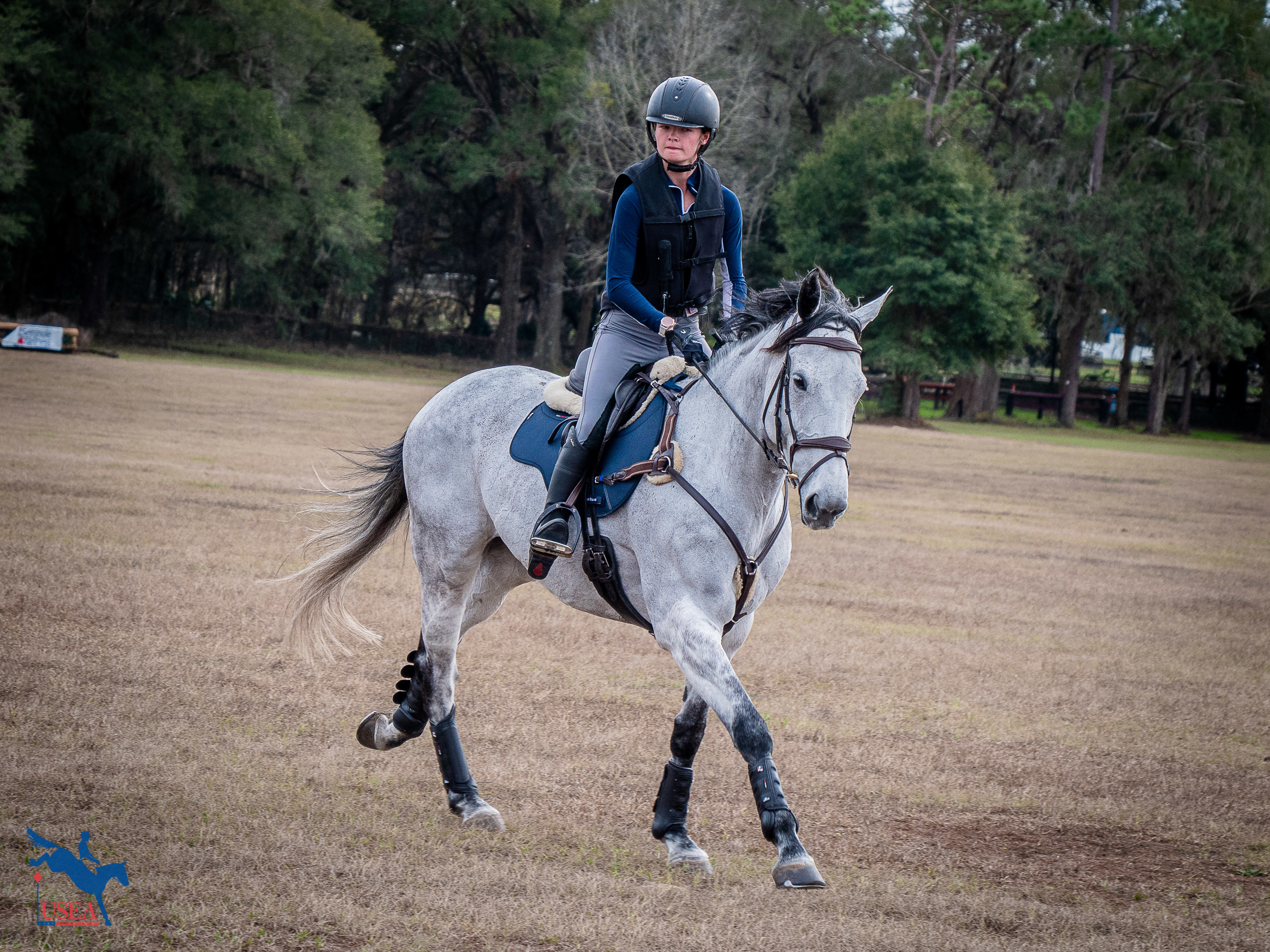
All of these concepts gave the riders much to think about as they practiced the different riding positions and prepared the horse for success in the mounted portion of the day. O’Connor began by viewing the riders’ galloping and preparation positions across the field before having the riders go over various jumps. He also touched on the importance of being able to go across a field and jump a single fence, noting that riders have to grasp the rhythm as they gallop. This is where O’Connor sees the talent of developing riders when they are just going across a field in their galloping position.
Riders then approached the different sets of jumps as O’Connor touched on in the morning and in previous lectures by preparing for the jump and working on planning for what’s next after the obstacle. O’Connor discussed maintaining consistent hand position up to the jump, noting that if a rider starts changing hand positions, the horse does not know where the rider is and will not jump as successfully. He reiterated that through every jump and area of the course, preparation is very important to help the horse be successful, both in the saddle and in care.
At the conclusion of the riding session, professional groom Emma Ford continued her discussion on maintaining the health and well-being of their horses. Ford discussed the importance of prevention and journaling horse care to keep track of changes and develop a history that can be referred to at a later date. There was also discussion on maintaining communication with the network of professionals who care for the horse as well as how riders should approach using therapies such as a chiropractor or applying certain solutions to the horse’s legs. The afternoon’s hands-on grooming activity demonstrated the art wrapping of a horse’s legs and the importance of maintaining the horse’s skin. Skin is the largest organ on the horse’s body, and you must keep it stimulated and healthy so they have good health and mobility. Ford suggested using a brush like the posture-prep, and rubbing the skin up and down each day, stimulating the blood cells and keeping the skin moving. A curry may be used as well, and there are techniques to do this in a way that feels like a massage to the horse and can help loosen their muscles and skin at once, helping their overall health.
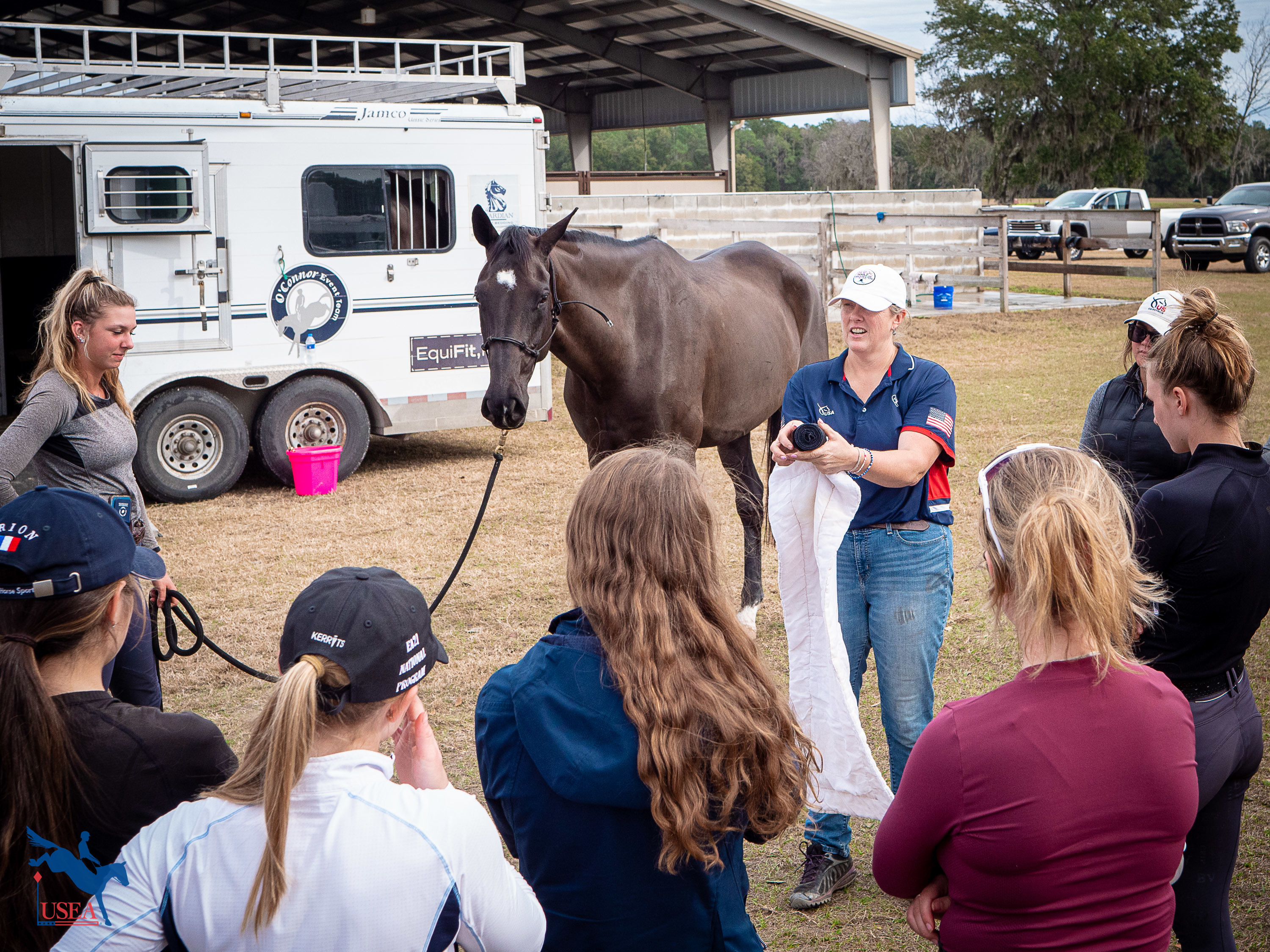
Day four helped the riders to apply all the concepts of the week to cross-country. From caring for the horses physically to helping them excel on course through communication in the saddle, there are many elements that help riders to be successful in the sport of eventing. All that was talked about during the week will be able to assist the riders in finishing off the clinic strong as the clinic concludes on Friday with one final day of show jumping practice.
Review all of the coverage from the EA21 Camp here.
About the USEA Emerging Athletes 21 Program
The purpose of the USEA Emerging Athletes 21 program (EA21) is to identify and provide consistent quality instruction to the next generation of elite event riders. The aim is to create a pipeline for potential team riders by identifying and developing young talent, improving horsemanship and riding skills, and training and improving skills and consistency.
The USEA Emerging Athletes 21 Program was launched in 2022 with a model of five summertime regional clinics taught by selected USEA Eventing Coaches Program (ECP) instructors, leading to a winter national camp consisting of selected Young Riders from the regional clinics. Athletes who are 21 years or younger, are current members of their USEA Young Rider Area program, and are established at the Training Level or higher, are eligible to apply for the EA21 program. Applications for the 2023 regional clinics will open in January/February 2023.
The USEA would like to thank Kerrits, WeRideTogether, and Ride iQ for their support and sponsorship of the EA21 national camp.
